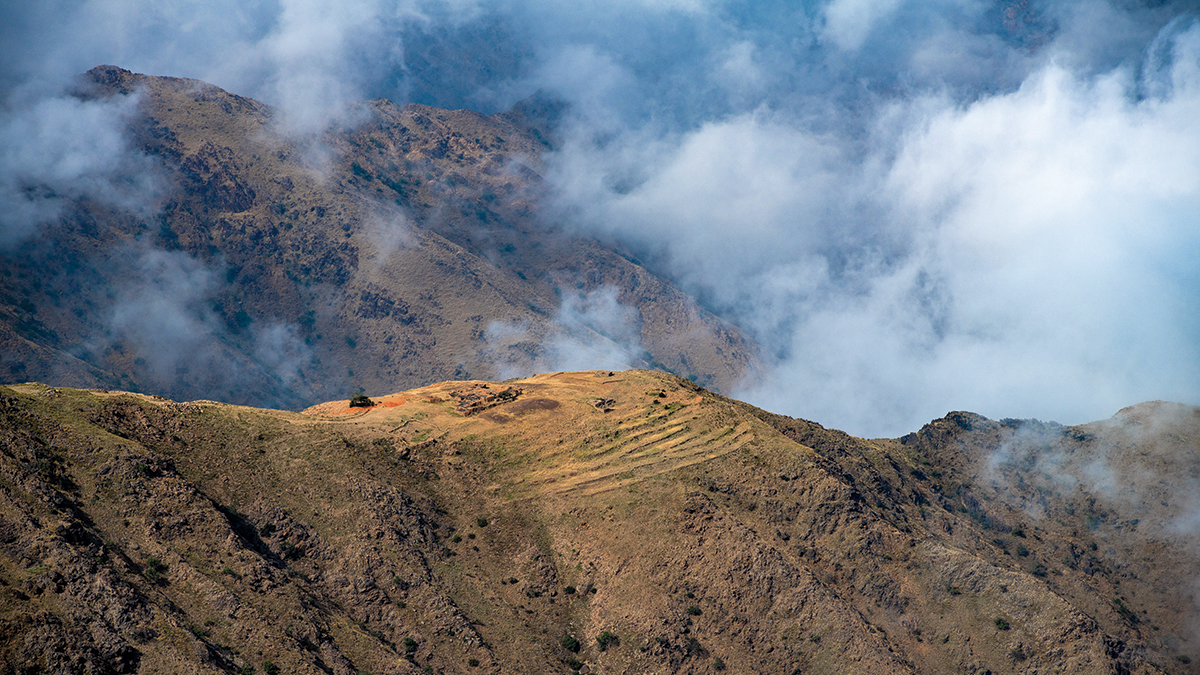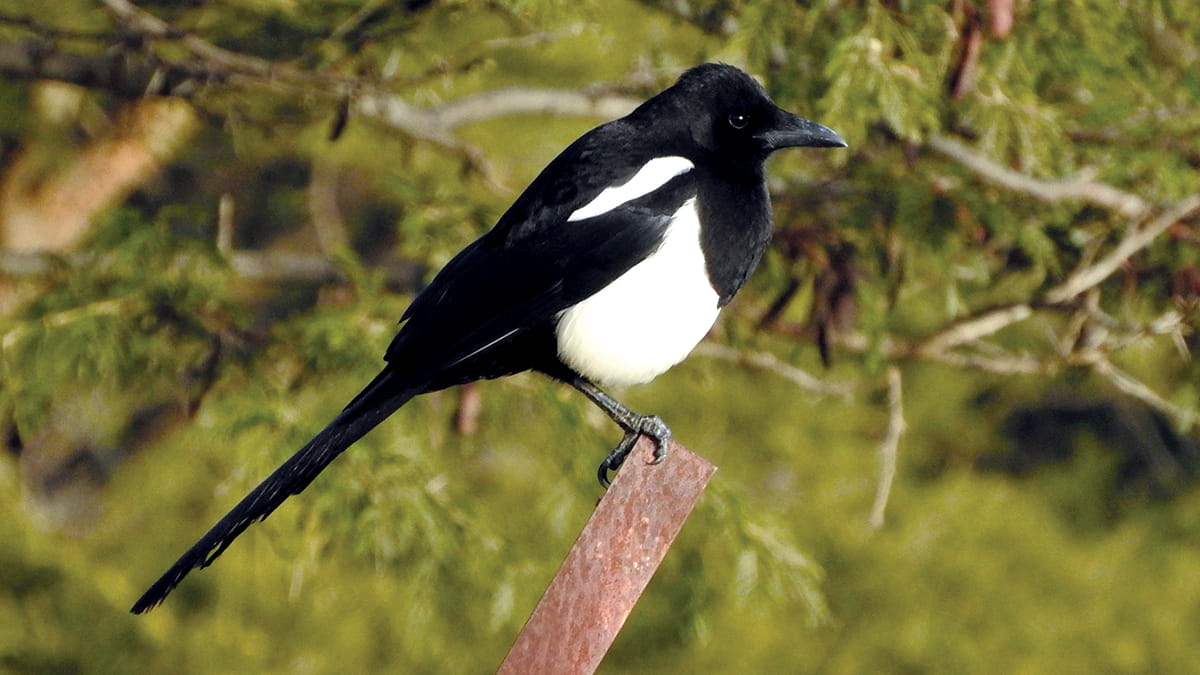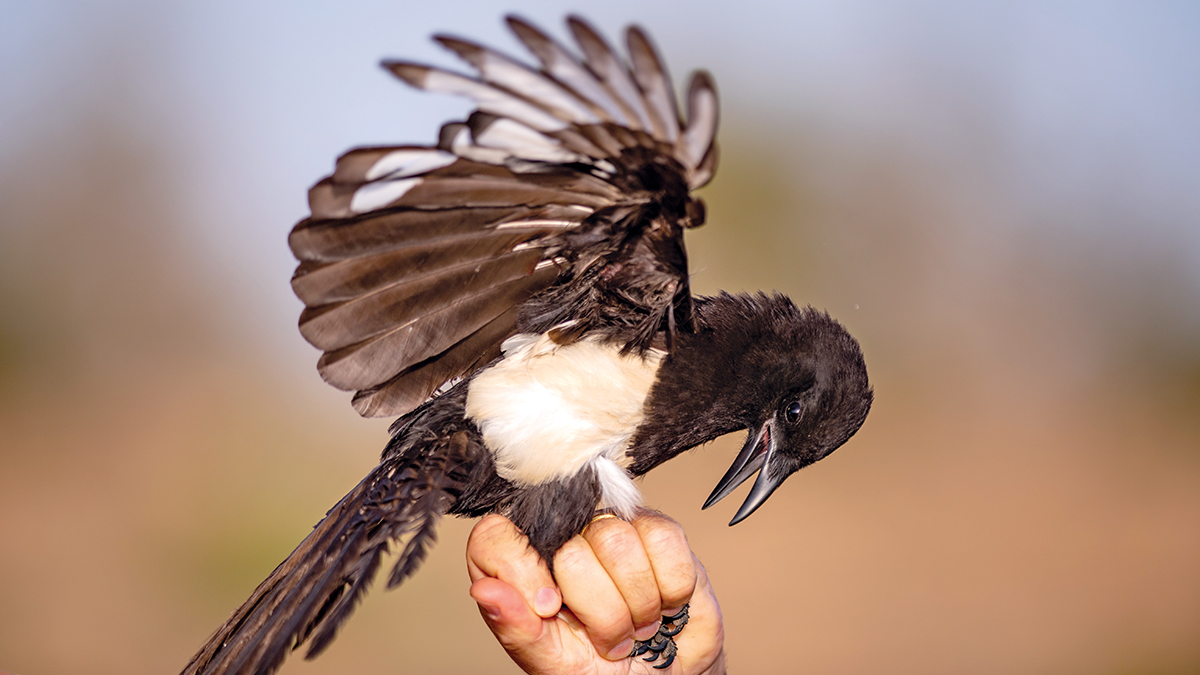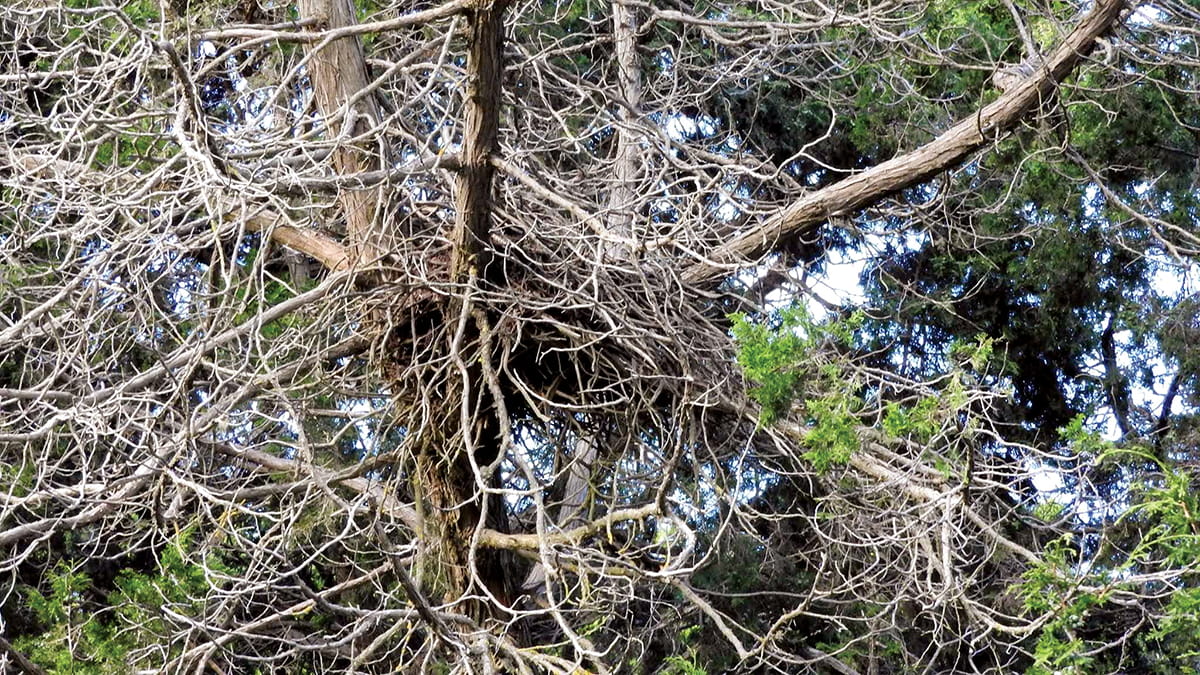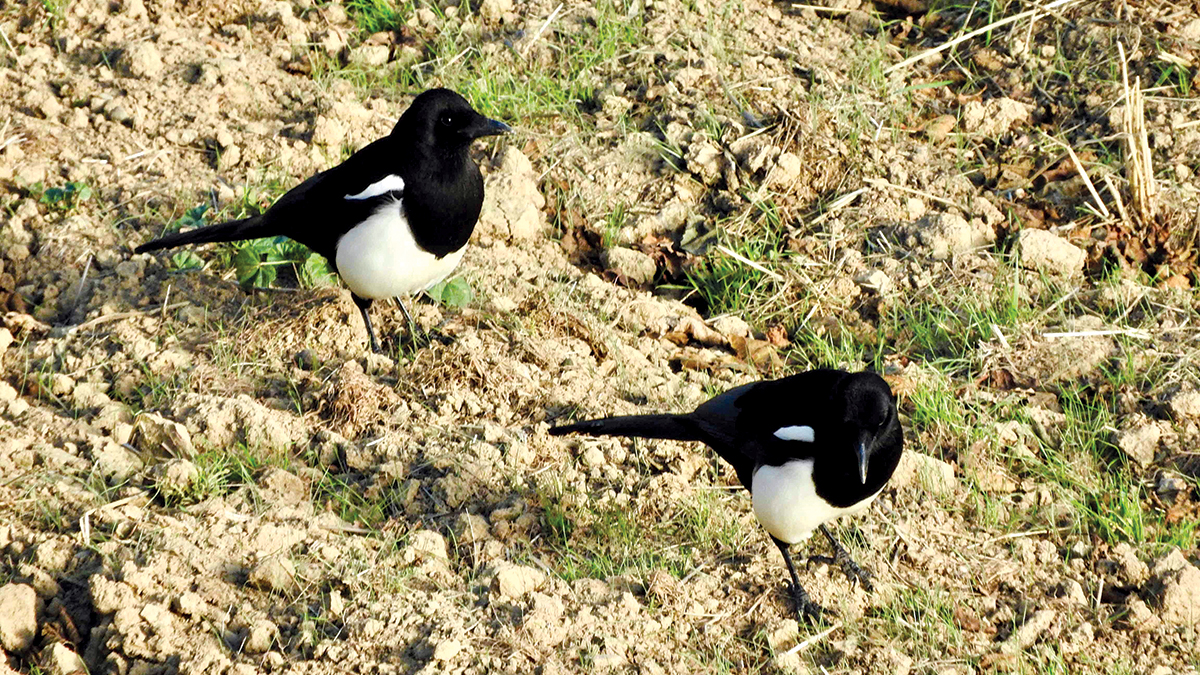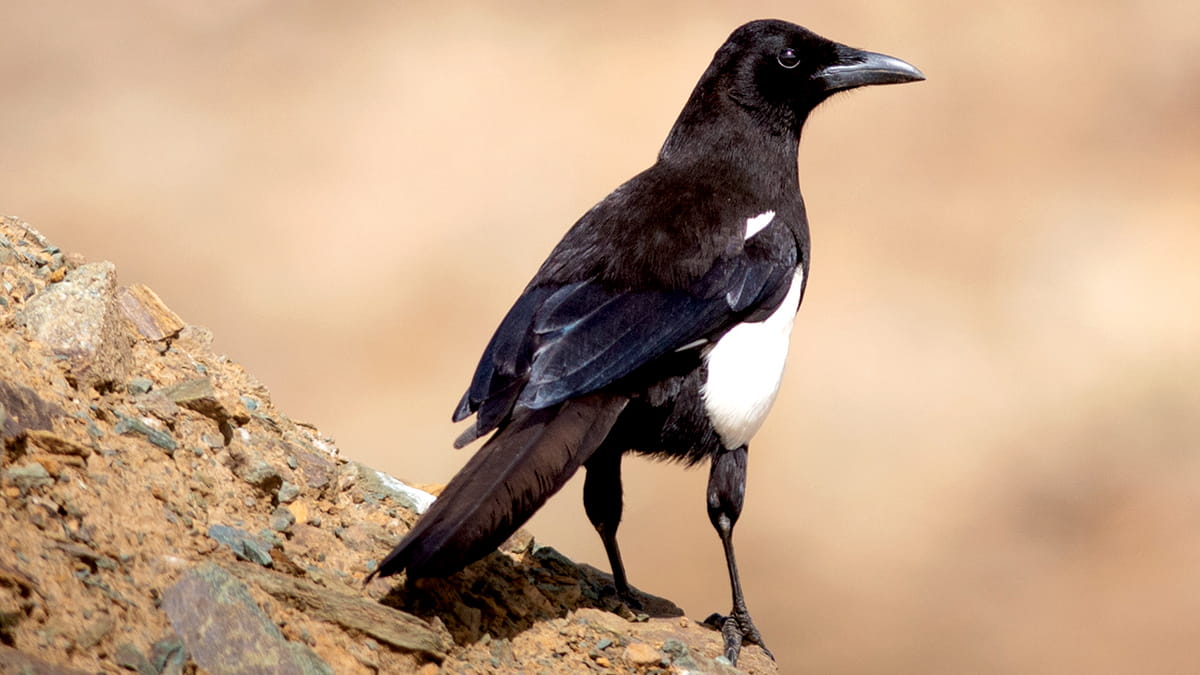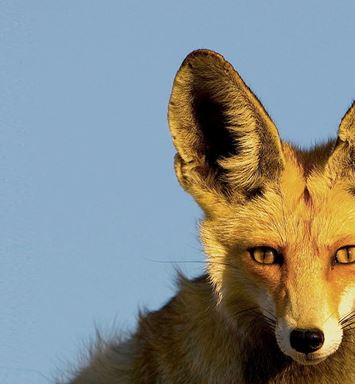ENVIRONMENT
A morning with magpies in Billahmer
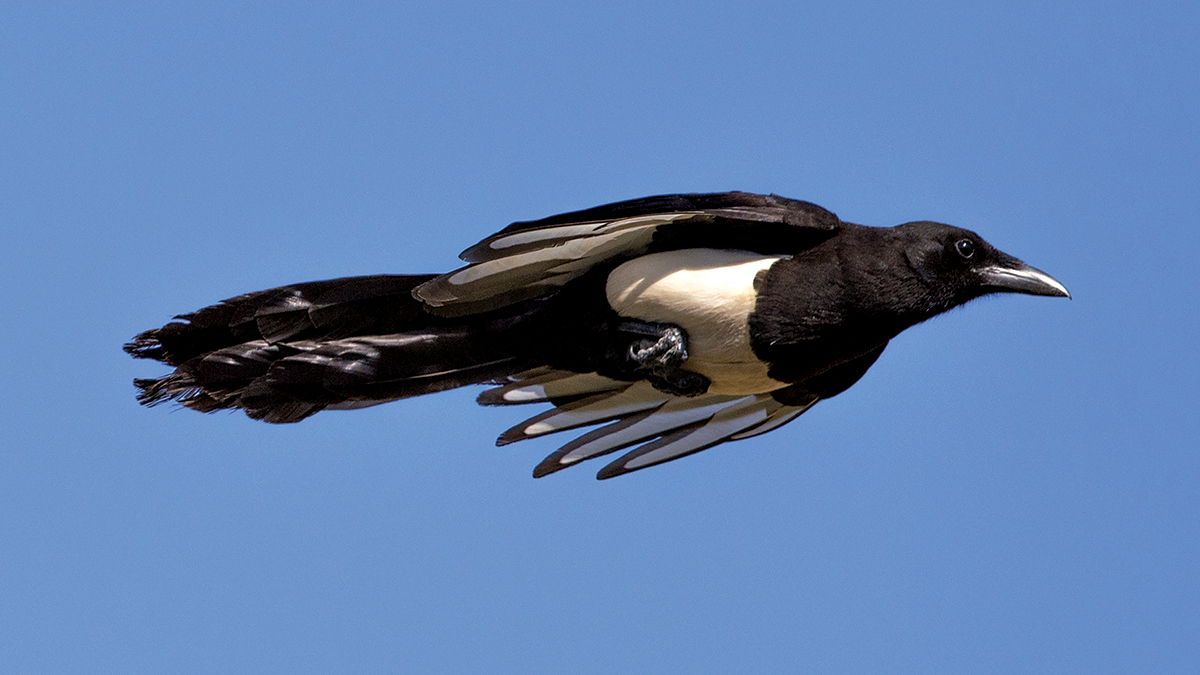
Global March 24, 2021 - By
Bittersweet encounters with one of the world’s rarest birds.
I arrived an hour before sunup on a January morning at a small village northwest of Billahmer, in the highlands of the Asir region.
Sunlight began to invade from the east. Then, out of the twilight, appeared four magpies winging their way past me toward the village. These were the object of my morning’s foray — the Asir magpie (Pica asirensis) — one of the rarest birds in the world, numbering perhaps no more than 100 breeding pairs.
Magpies belong to the Corvidae family, famously intelligent birds that include ravens, crows, and jays.
The magpie with which western Europeans have long been familiar is the common and widespread Eurasian magpie (Pica pica). However, the Asir magpie, long believed to be an isolated population of the former, is in fact, a distinct species and endemic to the highlands of the Kingdom’s southwest, meaning they can be found nowhere else in the world.
Odd sightings
The Asir magpie once ranged as far north as Taif, and as far south as Jebel Al-Qahar in Jazan Province. Unfortunately, their range appears to have shrunk dramatically over the past few decades, due in large part to the fragmentation of their preferred habitat — mature acacia and juniper woods — generally at an altitude of around 2,200 meters and higher.
In recent years, these birds have only been recorded with some regularity in a few pockets of suitable habitat from Al Namas to the north, some 300 kilometers (km) south of Taif, to Billasmer, some 150 km north of Jebel Al Qahar.
It is suspected that they have disappeared altogether from former strongholds near Abha, such as Jebel Soudah. However, odd sightings around al Bahah suggest that the magpies may still exist outside their current known range, but have simply gone undocumented in recent years.
For this reason, I decided to explore areas where they had formerly ranged in the hope of casting a clearer light on their actual distribution.
What is extinction, after all, but a sudden, unexpected, and irreversible disappearance?”
Follow the “Ack Ack”
The wooded wadi in which I found myself that chilly morning was an ideal nesting habitat for the magpies. Mature African juniper trees populated the bottom of the wadi, growing thick in places.
Somewhere in the dense branches, the four birds I disturbed before dawn had been roosting, but now I could hear them in the distance, back toward the village, giving their distinctive contact call from which the magpies get their Arabic name, the “Ack-Ack.”
I quietly stalked off toward them, hoping not to scare them away.
Finding the magpies
By the time I got there, the magpies had gone. So, I ventured back to the village to relocate them. I didn’t have far to go.
I stopped and began filming the lone bird on the road and switched on my audio recorder to capture the sounds. I realized then that the bird I was filming was vocalizing as well, giving a soft call as it walked up the road in my direction.
This group did not seem too fazed by my presence and carried on searching for food for nearly the half an hour I spent with them.
Desperately understudied
There is scant literature about this species as it has been desperately understudied. There is still a lot to be learned about the ecology of Asir magpies, and even casual observations by birders, bird photographers, and citizen scientists can help reveal more about the lives of these wonderful, critically endangered birds.
On my way out of the village I heard more magpies. They were perhaps a half kilometer from the group I had just left only moments before.
By the time I arrived at the next wadi, I had only an hour before I had to head back to Abha for the flight home. In that time, though, I did locate another four magpies, bringing the day’s total to 14, the most I had seen in a single visit to the Asir region.
Extinction is forever
Six months later I took my wife and a friend, Adam, to Billahmer to see the magpies, and while we did find two at the last spot I encountered during the previous visit, the larger group near the village was nowhere to be found.
I worried then that something might have happened to them. What is extinction, after all, but a sudden, unexpected, and irreversible disappearance? A sudden silence where the magpies’ call once rang out? With researchers worried that their numbers will continue to spiral down, the day that the Asir magpie goes extinct may be much closer than we realize unless we act now.
